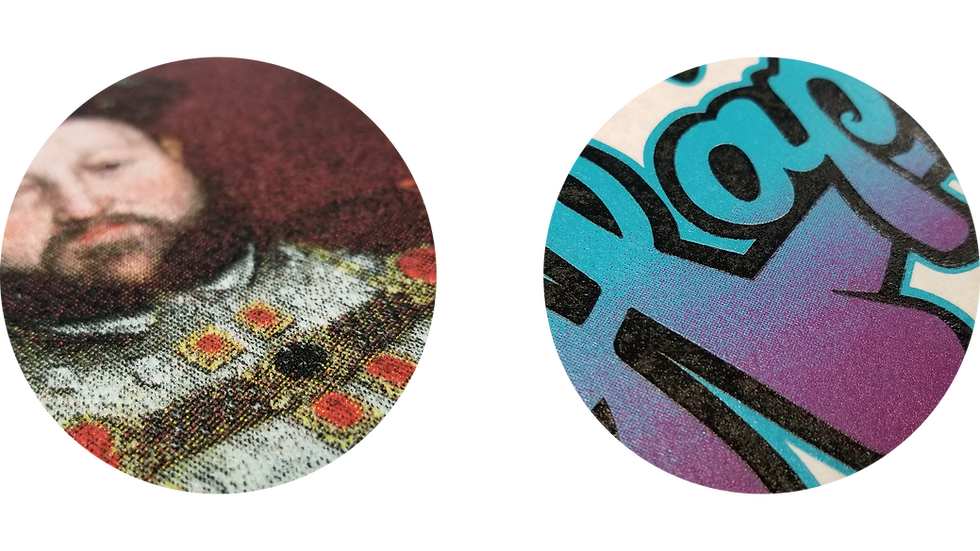How To Use A Halftone
- Kevin Ciminelli
- Nov 26, 2018
- 3 min read

Here's a hypothetical situation: You find a black and white photograph of a glass filled halfway with liquid on the internet and decide to print it out on your home printer. Is the glass that you're looking at half full, half empty, or half-toned?
TRICK QUESTION! The image is all of the above. Not only is the glass both half full and half empty but by the very act of printing the image on paper, it has now been recreated using a halftone technique. By definition halftone is the technique used that simulates continuous tone imagery through the use of dots, varying either in size or in spacing, thus generating a gradient-like or fade effect. Even though it may not look like it, when your hypothetical printer prints a black and white image, it is using only one ink cartridge, black, to create all of the transitional gray tones between black and white on the spectrum using an extremely fine pattern of dots (see images below). These dots are nearly imperceptible to the naked eye and create the illusion of a shift in value. Through use of halftone, a printer can use only four cartridges (cyan, magenta, yellow, and black or CMYK) to replicate nearly any color by overlapping inks with varying dot size.

Just like a digital printer, a screen printer can also take advantage of the halftone technique for a wide variety of reasons. If you would like to reduce screen setup and use halftone to shift the value of a color, you can do that. If you want to fade two colors together, you can use halftone to do that. If you want to use cyan, magenta, yellow, and black inks to print just like an at-home printer would, you can do that and replicate the full spectrum of colors. You can even use the halftone dot texture as a design element by purposefully creating larger, more visible areas of dots if you prefer the form of the halftone pattern over the function.

When using a halftone pattern for the purposes of design, you may also be excited to learn that you can alter halftone pattern to fit your own aesthetic desires. The most common ways of doing so would be changing the actual shape of your halftone pattern from circles to any number of different shapes such as triangles, stars, ellipses, diamonds, straight lines, etc.. By altering the size and frequency of a shape you can still achieve all of the same results of a halftone pattern whether that be in a stylized way or a more functional way. Check out some beefed up circle, line, and diamond halftone in the sample image below!

Now that you know the basic concept of halftone and it's capabilities, communicate with your printer and try to make use of it on your next project and be sure to get creative with it! It could be a make-or-break element for your product design.
When it comes to bringing your project to life, the importance of who you choose to work with can not be overstated. The team at South Shore Customs is not only committed to providing a fast and affordable service, we also stand by our craft as artists who are invested heavily in creating the highest quality products for our clients. Have questions about process or pricing? Want to get started on a project? Speak with one of our knowledgeable team members today.





























Comments